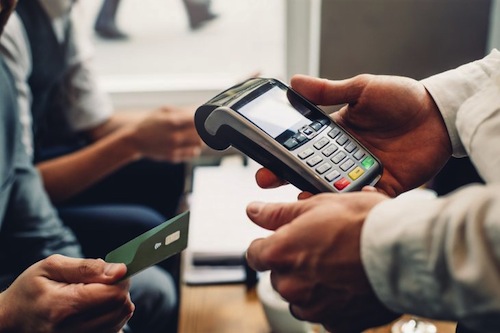Digital banking involves the digitalisation of all traditional banking products, processes and activities to service customers using online channels. With digital banking, any bank’s branch services are available and accessible 24/7 on mobiles, computers and compatible smart devices.
The most prevalent trend in the financial services industry today is the shift to digital, specifically mobile or online banking. In today’s era of unprecedented convenience and speed, consumers don’t want to have to trek to a physical bank branch to handle their transactions, especially deposits and withdrawals.
Though the introduction of electronic transaction charges (e-levy) nearly derailed this trend, there is a seemingly significant but underrated threat to digital or mobile banking, which could specifically hurt the banks. Nonetheless, it could be to the advantage of financial technology companies (fintechs) and telecommunication providers (telcos).
Undoubtedly, all financial institutions in the country currently have one digital platform or the other – be it a mobile app, Unstructured Supplementary Service Data (USSD), QR code, Point of Sale (PoS) terminals, among others, for easy transactions.
My personal experience with my banking institution’s mobile app, as well as the several reports I have received and seen – both on social media and in my circles – shows that the public has adapted to these digital platforms for convenience; but some inefficiencies are frustrating users, and can be a disadvantage to the banks or financial institutions especially.
Try five transactions with your banking app and three out of the five are likely to fail. As for the USSD codes or short codes, the least said about them, the better.
It’s quite common to hear people complain about their inability to execute bank-to-mobile wallet transactions on the streets. Meanwhile, most of the youths have departed from the use of banking cards (debit/credit or prepaid cards), popularly referred to as ATM cards or Visa cards.
Unfortunately, people are forced to cash out money from their banks when about to attend some important event or visit an institution that will require them to pay some fees because the possibility of the mobile app or short code giving a ‘transaction failed’ response is very high. This is an affront to the cashless economy agenda.
By promoting a cashless society, digital banking restricts the circulation of black money as government can keep track of fund movements. In the long run, digital banking is expected to lower the minting demands of a currency. While I will not like to mention names, some local banks seem to be on top of the list for transaction failed notifications.
The most recent frustrating experience with this topic is when a friend called me last Friday, requesting for a GH¢800-loan to be refunded as soon as possible. The reason is that he was at the hospital with his big sister and after all laboratory scans and tests were done, he was unable to transfer cash from his bank account to his mobile money wallet for payment.
This call came around 5:30 pm and I could feel his frustration and tension to avoid any disgrace or awkward situation. Surprisingly my bank app with a Pan-African bank also failed to respond on several trials. Fortunately, I was in town so I quickly withdrew money from a nearby ATM with my Visa card and sent it via mobile money.
Later that same night, my friend sent back my money and followed it with a call, just to inform me that the transaction went through later but he had transaction charges deduction on each of the failed attempts, so about GH¢20 in charges that failed due to no fault of his was gone.
Banks need to be able to respond quickly. Banks have to compete, not only with other banks, but also with fintechs and Big Tech giants who have started stepping into consumer finance, promising high-standard web, and mobile financial services. Hardly have any of these alternatives been fingered in frequent transaction failures like is being seen with the platforms put forth by the banks.
Mobile contactless merchant payments
Mobile contactless payments are a hot digital banking service, and the COVID-19 outbreak has accelerated them even further. Retailers are developing measures that limit physical contact with surfaces and the use of cash.
Mobile contactless payments allow customers to simply tap their smartphone onto a POS terminal (or other free-of-touch readers) to pay. It is a fast, convenient and secure payment solution for both customers and merchants. The increased use of mobile payments provides banks with the opportunity to extend their offering with value-added services, such as loyalty schemes, scanning coupons in store, GPS alerts, and more.
However, mobile contactless merchant payments were not left out of this frequent transaction failed challenge. Queues at our big shopping malls are longer for people who want to use the PoS terminal for payments. This challenge is not limited to the banks, the telcos are also found wanting with PoS failure. I have visited several shops where shop owners have the PoS machine but have abandoned the use because of the frequent untenable transaction failures recorded. However, merchant code system from the telcos and QR codes from some banks are becoming common with retailers and wholesalers now.
Instant P2P payments
P2P (Peer-to-Peer) is thriving in today’s digital environment. It is a simple payment solution that allows users to send money instantly from any device, using a linked bank account, a credit/debit card, or a Momo wallet. Users can comfortably transfer money to friends and family from their phone or computer with a tap or two.
When it comes to customer convenience and simplicity, P2P is a hard-to-beat functionality that fits great with an increasingly mobile-first society where financial services are expected to happen in real-time. With these frequent transaction failures unaddressed and unbothered about, P2P will definitely suffer.
In conclusion, today, the best-in-class digital banking services are those that balance innovation, convenience, and human-centricity to ensure frictionless financial life management for their customers via any device. Banks need to be able to respond to any life situation with fast and convenient digital products, beef up their software and data management systems to accommodate the traffics quickly, and resolve security threats.
The needed attention should be given to the frequent system shutdowns and other technical challenges resulting in transaction failures. Banks require more innovative strategies to stand a chance of competing if they want their mobile money services and other digital platforms to compete with the Fintechs and telcos Momo.










